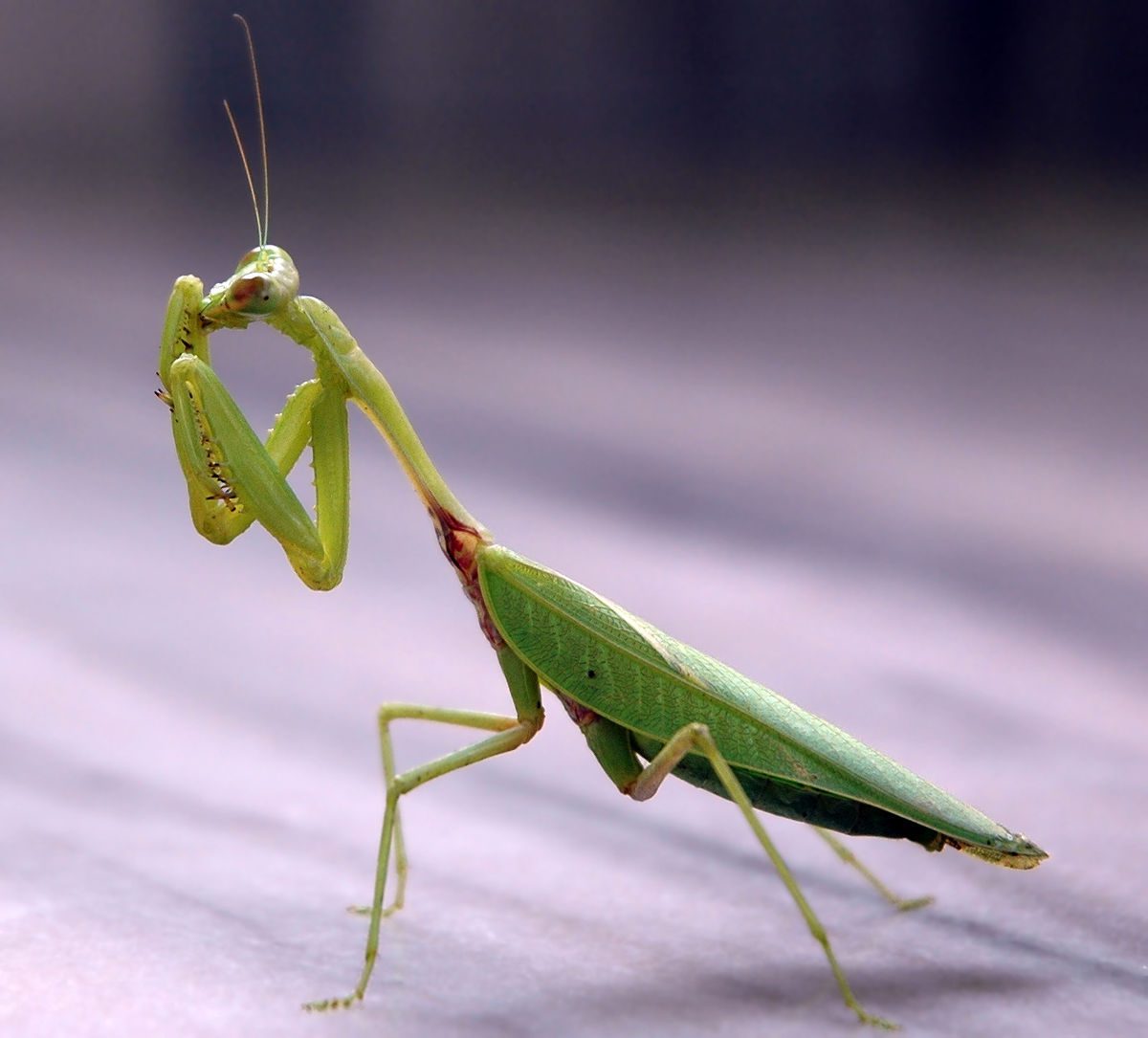Praying Mantis Care Sheet
Housing
Your mantis home will vary depending on species. When choosing the forever home for your mantis you should take the exact adult size of the mantis into consideration. The size of each species varies. The size of the enclosure should be 2 times the width and 3 times the length of the mantis to ensure there is enough room to moult safely. Once a mantis has moulted, you mustn’t handle it for at least 24 hours whilst their exo-skeleton hardens to protect their internal organs. Handling your mantis after a moult could cause the exoskeleton to harden in an unnatural state.
One of the main causes of death with captive mantis is lack of ventilation. If a glass enclosure is used ensure there is enough ventilation. There must be cross ventilation also, to prevent mould, which is fatal to mantis.
Faunariums are designed to make sure there is sufficient ventilation.
Do not forget decorations for your mantis to hang from. We recommend using fake plants and/or twigs once your mantis gets to adult, however, be sure there is enough room for your mantis to hang from freely without touching anything.
Feeding
Praying mantis are notorious for their hunting skills, and even inspire an ancient mixed martial art fighting style. Mantis love to hunt and therefore should be fed live food, they prefer flying pray. Flightless fruit flies are a great addition to your mantids diet when they are young, moving up to small locus and even green and blue bottle flies. Ensure the food you offer your mantis is small enough to manage.
Feeding schedules will vary depending on your mantis species and size but usually differ between daily to every 1-3 days.
Moulting
Like most inverts, mantis shed a layer of skin from time to time. This is an important part of their life cycle and allows your mantis to grow. You may notice your mantis go off their food days leading to their moult. You should not offer your mantis live food during this process as it can distract them from the moulting process.
Avoid handling your mantis during this time.
During moulting your mantis exoskeleton is soft, you should allow your mantis 24-48 hours after moulting to harden before handling.
Heating
Many species of mantis can be kept at room temperature (no lower than 18°c), although some species will need warmer enclosures to match their natural climates. You can do this by positioning their enclosure on thermostat-controlled heat source, we recommend heat mats for this.
Additionally, a heat bulb can be used to supplement heat. This should be mounted outside the enclosure to stop your mantid hanging from the bulb and getting burnt.
Your mantids enclosure will need misting once or twice daily depending on species. This will help keep the enclosure moist and will also allow you mantis to drink as they can not drink out of water dishes.
Monitor your mantis enclosure using a high-grade thermometer and hygrometer.
For any further information or advice please feel free to ask a staff member in store or contact the store on 01902 494860




